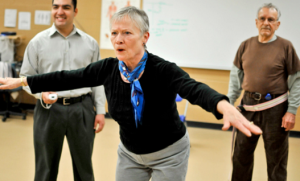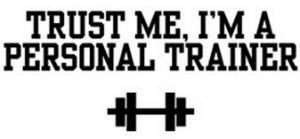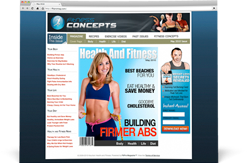Guest Post by Cody Sipe, PhD
Training mature adults effectively is about more than just meeting their physical needs. If you want to grow your business with this gigantic market then it is critical that you understand who they are. What makes them tick. What appeals to them. What repels them. What they respond to. What characteristics they look for in a facility or in a trainer.
Getting them to train with you involves more than just having a personal training certification, creating a slick flyer, having a great name or tagline, or giving a big discount. Like with any other target market you’ve got to be inside their heads. Most importantly it is vital that you understand, appreciate and then appeal to their core values. If you want their business you need to earn their business.
Here are some key values that you can use to appeal to potential mature clients:
Family

Mature adults love their family. They want to be able to spend lots of quality time with them. They worship together, eat together and play together. The Boomers are often called the “sandwich generation” because they end up caring for their aging parents and supporting their adult kids and/or grandkids at the same time.
In fact, a large percentage of them financially support their adult children. Those that are grandparents are especially fond of their grandchildren. Grandkids are the apple of their eye. They would do almost anything for them. And they would do almost anything to be able to spend time with them.
You want to appeal to mature adults then appeal to their sense of family. Tell them how your program will help them to play with their grandchildren, explore Disneyworld with them and climb the bleachers at their sports competitions. Show images of families and grandchildren spending time together. Talk to your current clients about their families and grandchildren. Give them an opportunity to brag a little. Have times or events where they can bring their families to the facility so they can see where “grandma” and “grandpa” work out.
Socialization
This might seem obvious but it is important to both recognize and utilize this fact. We use small group personal training because it provides a great avenue for socialization. Clients that exercise together in groups of 4-6 develop great relationships. The group provides great support to one another and helps them to stay accountable for exercise. It can be challenging, at times, to corral the conversation and keep everyone exercising but they have a great time and the session flies by quickly.
Highlight the relationships that exist between members in your facility. When they come to check out your facility introduce them to some of the other clients. Highlight your clients in your blog emphasizing your relationship with them. Communicate how your program can help them stay socially connected.
Spirituality and Faith
As people get older and travel through mid-life their spiritual and religious beliefs typically deepen and become more meaningful. Faith becomes even more important than in their younger years. Whether or not you have a deep faith or not doesn’t matter. A large majority of mature adults do. Sometimes what you don’t do is just as important as what you do.











